Users
Managing Users¶
PerfectWORK defines a user as someone who has access to a database to perform daily tasks. You can add as many users as you need and, in order to restrict the type of information each user can access, rules can be applied. Users and access rights can be added and changed at any point of time.
See Also
Add individual users¶
Go to Settings ‣ Manage Users and click on Create.
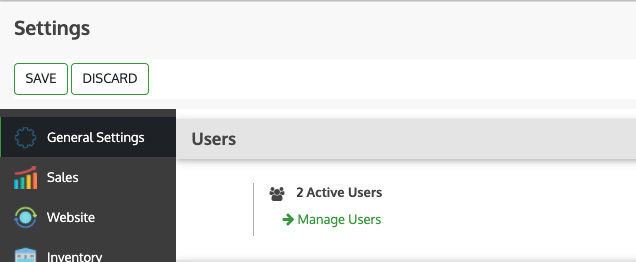
Fill in the form with the needed information. Under the tab Access Right choose the group within each application the user can have access to.
The list of applications shown is based on the applications installed on the database.
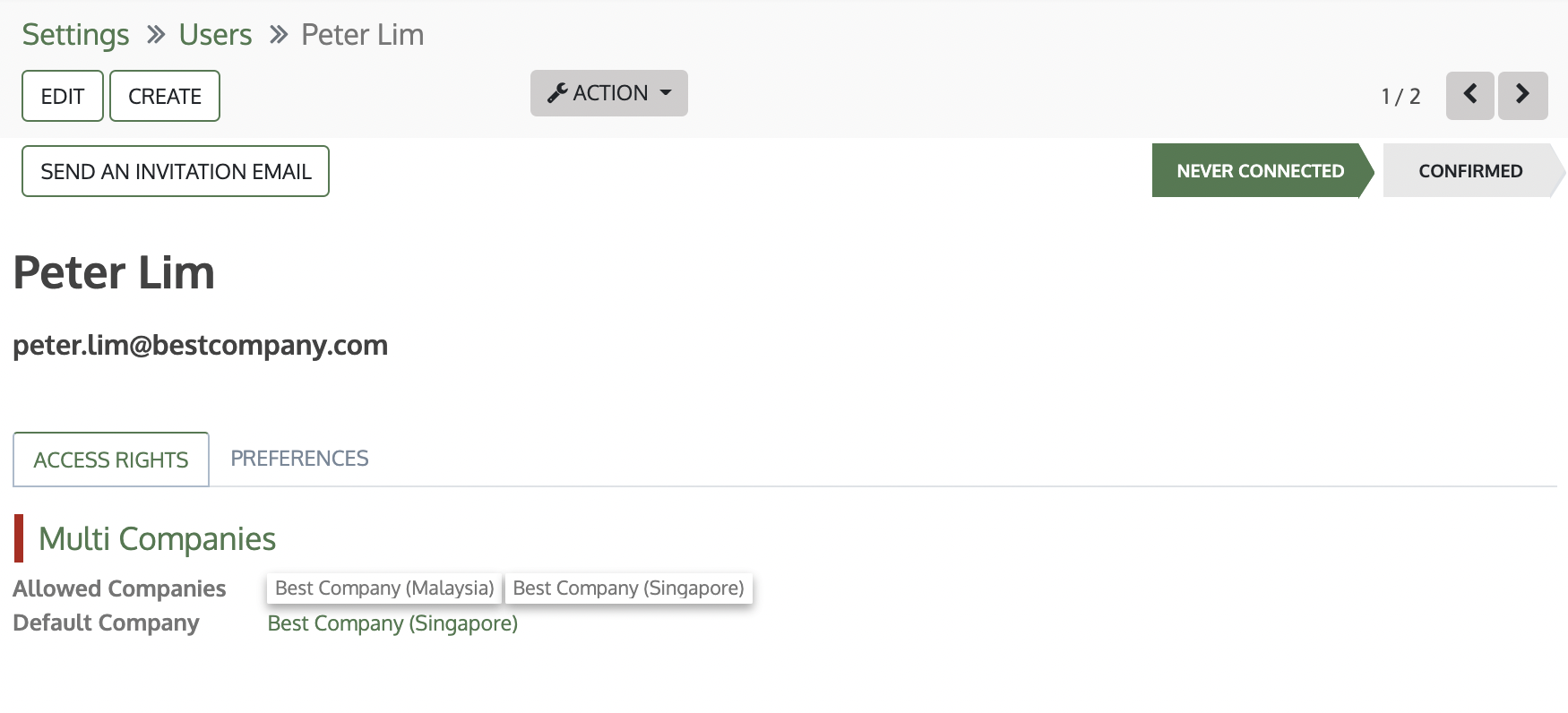
When you are done editing the page and have Saved it, an invitation email is automatically sent to the user. The user must click on it to accept the invitation and create a login.
Deactivate users¶
Go to Settings ‣ Users & Companies ‣ Users, open the user you want to deactivate, click on Action, and then on Archive.
Danger
NEVER deactivate the main user (admin)
Passwords Management¶
Reset Password¶
Enable password resets from login page¶
It is possible to enable password resets directly from the login page.
To do so, go to Settings ‣ General Settings, Under Users Tab, activate Password Reset and Save.
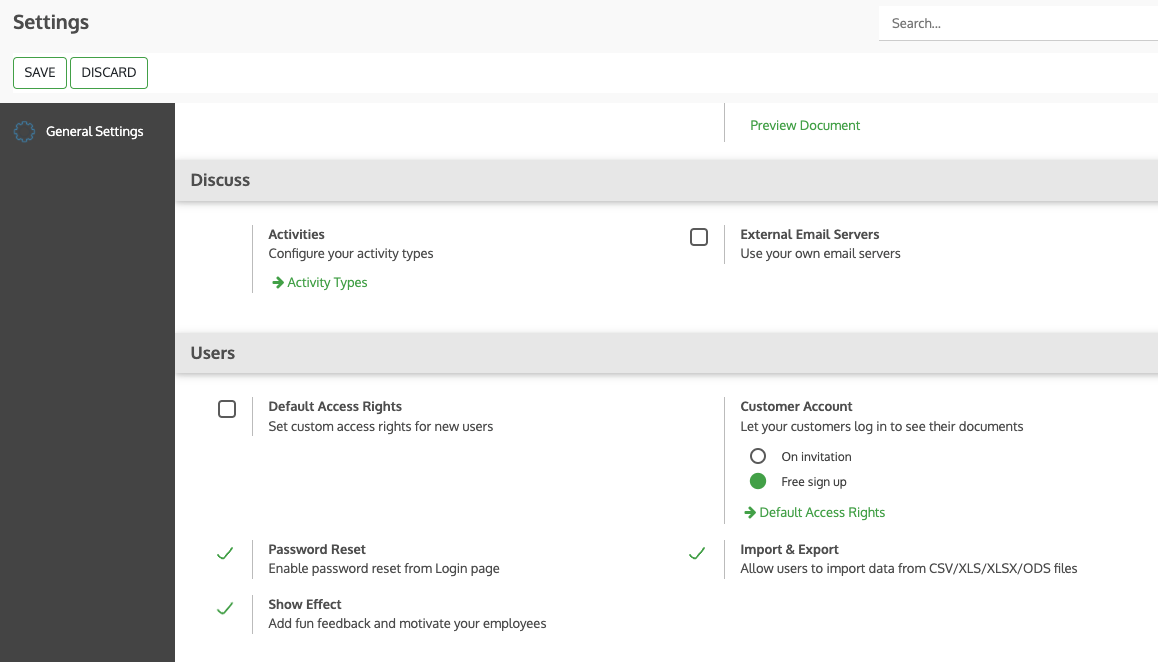
Send reset instructions to users¶
Go to Settings ‣ Users & Companies ‣ Users, select the user out of the list and click on Send Password Reset Instructions on its user form. An email is automatically sent to them.
Note
The Send Password Reset Instructions button only appears if the PerfectWORK invitation email has already been confirmed by the user.
This email contains all the instructions needed to reset the password, along with a link redirecting the user to an PerfectWORK login page.
Change users’ passwords¶
Go to Settings ‣ Users & Companies ‣ Users and select a user to access its form. Click on the Action button and select Change Password.
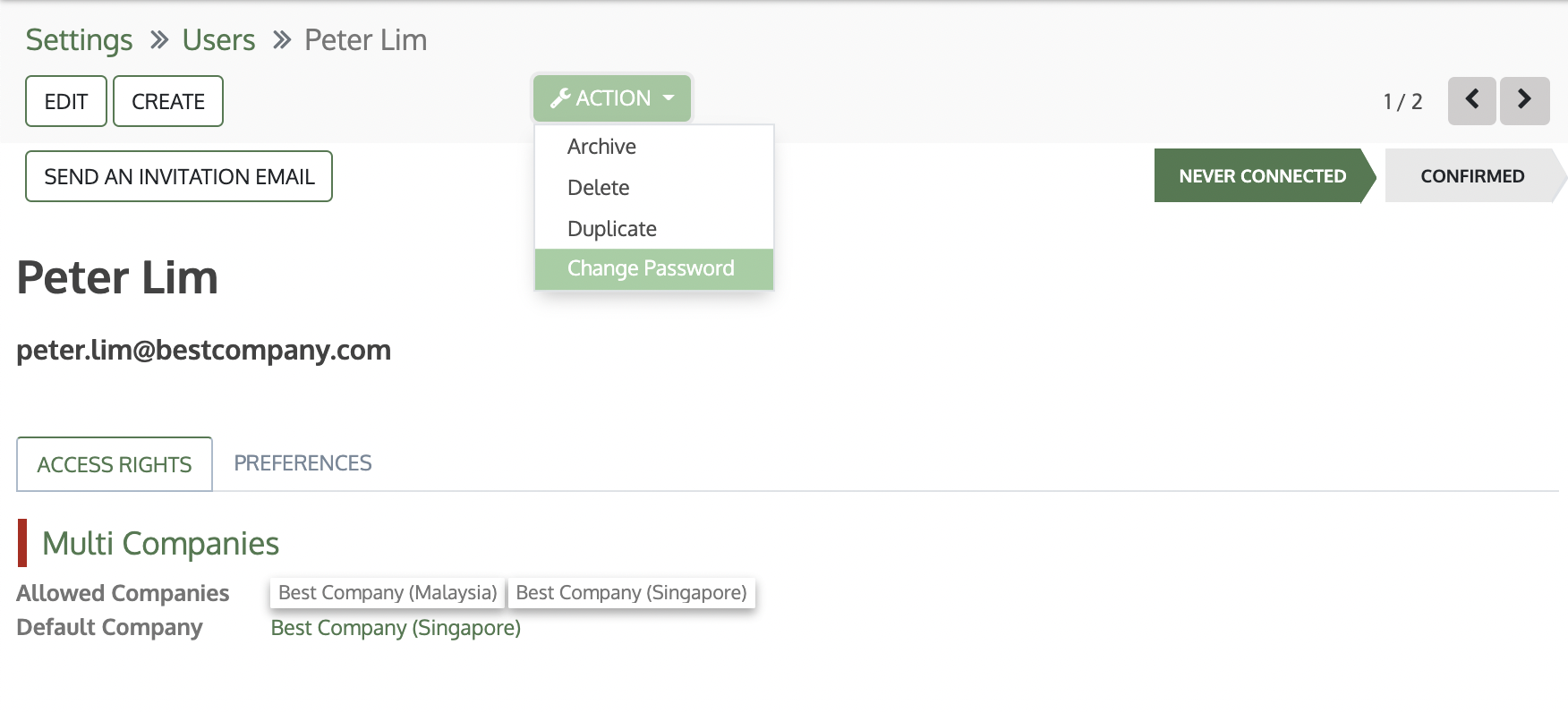
Enter a new password and confirm by clicking on Change Password.
Note
This operation only modifies the password of the users locally and does not affect their odoo.com account. If you want to change the odoo.com password, you can send the password reset instructions.
Multi Companies¶
The Multi Companies field allows you to set to which of the multiple companies database you hold the user can have access.
Note
Note that if not handled correctly, it may be the source of a lot of inconsistent multi-company behaviors. Therefore, a good knowledge of PerfectWORK is required. For technical explanations refer to multi-company Guidelines documentation.
See Also
Change Language¶
PerfectWORK provides you with the option to manage PerfectWORK in different languages, and each user can use PerfectWORK in his own language.
Load your desired language¶
The first thing to do is to load your desired language on your PerfectWORK database.
From the general dashboard click on the Settings app; on the top left of the page select Translations ‣ Laungauges, select a language to install and click on LOAD.
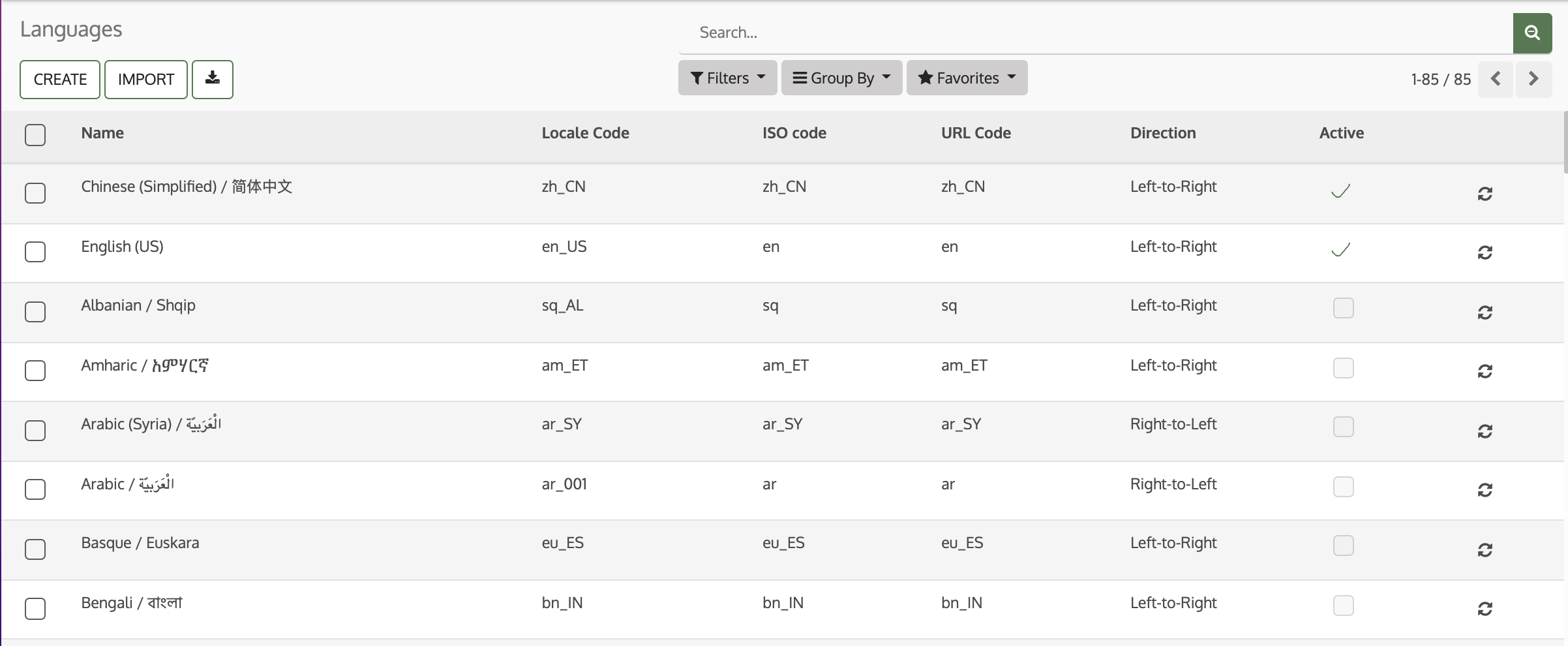
''' note If you check the “Websites to translate” checkbox you will have the option to change the navigation language on your website.
Change your language¶
User can change the language to the installed language by going to the drop-down menu at the top right side of the screen, choose Preferences.
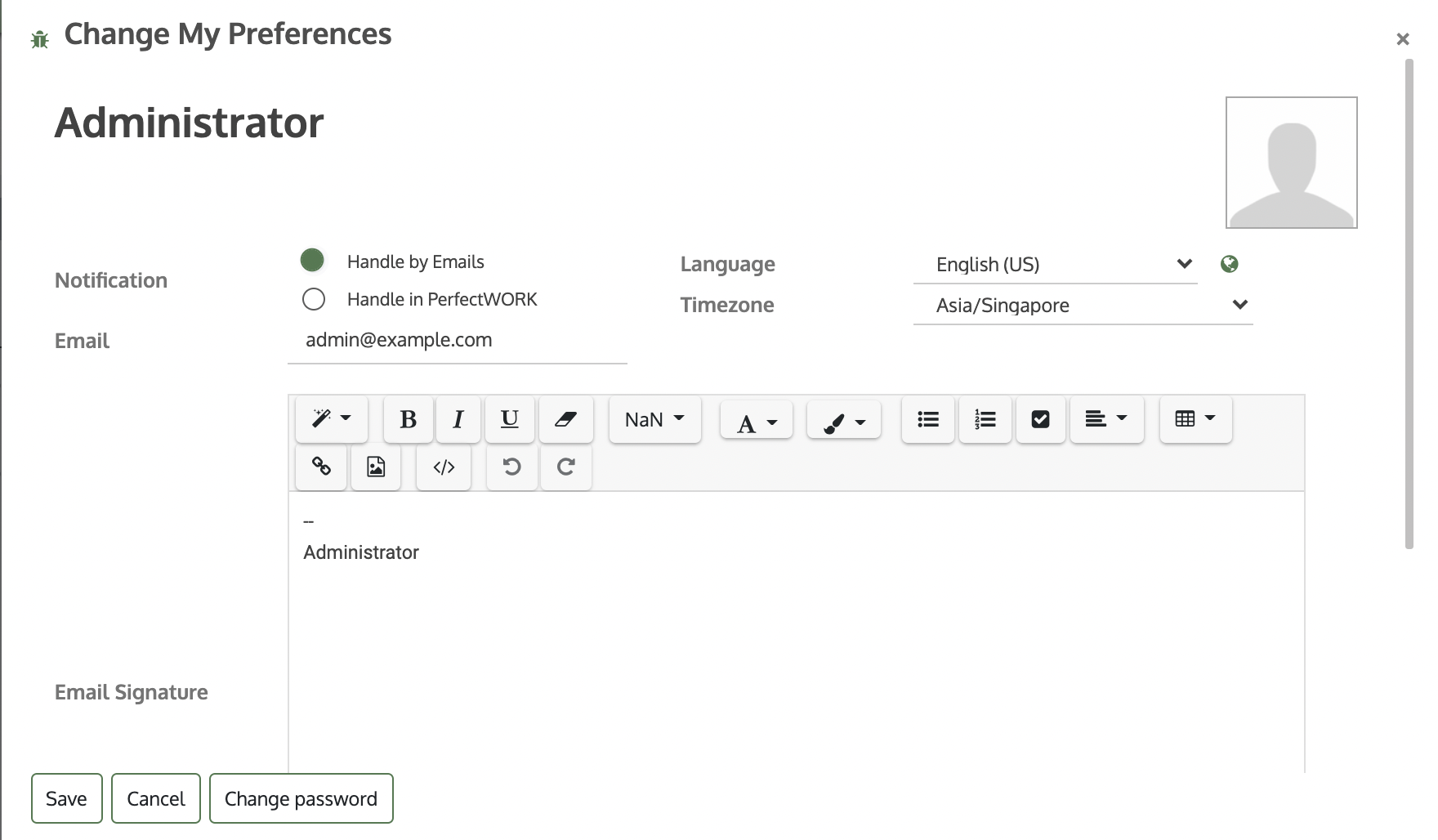
Then change the Language setting to your installed language and click SAVE.
Change other user's language¶
PerfectWORK also gives you the possibility for each user to choose his preferred language.
To change the language for a different user, choose Users ‣ Users from the Settings app. Here you have a list of all users and you can choose the user who you’d like to change the language for. Select the user and click on Edit in the top left corner. Under Preferences you can change the Language to any previously installed language and click SAVE.
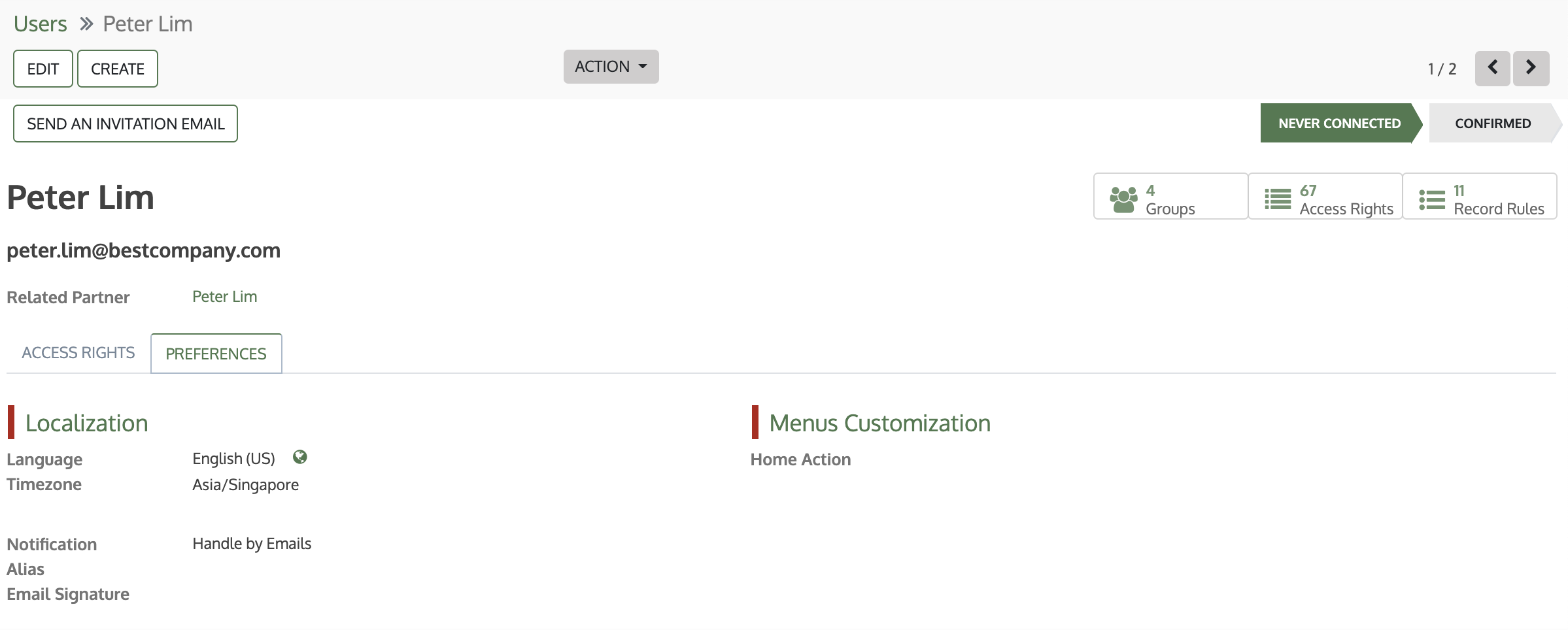
Access Right¶
Activate the developer mode, then go to Settings ‣ Users & Companies ‣ Groups.
Groups¶
When choosing the groups the user can have access under Access Rights, details of the rules and inheritances of that group are not shown, so this is when the menu Groups comes along. Groups are created to define rules to models within an application.
Under Users, have a list of the current ones. The ones with internal user access are shown in black.
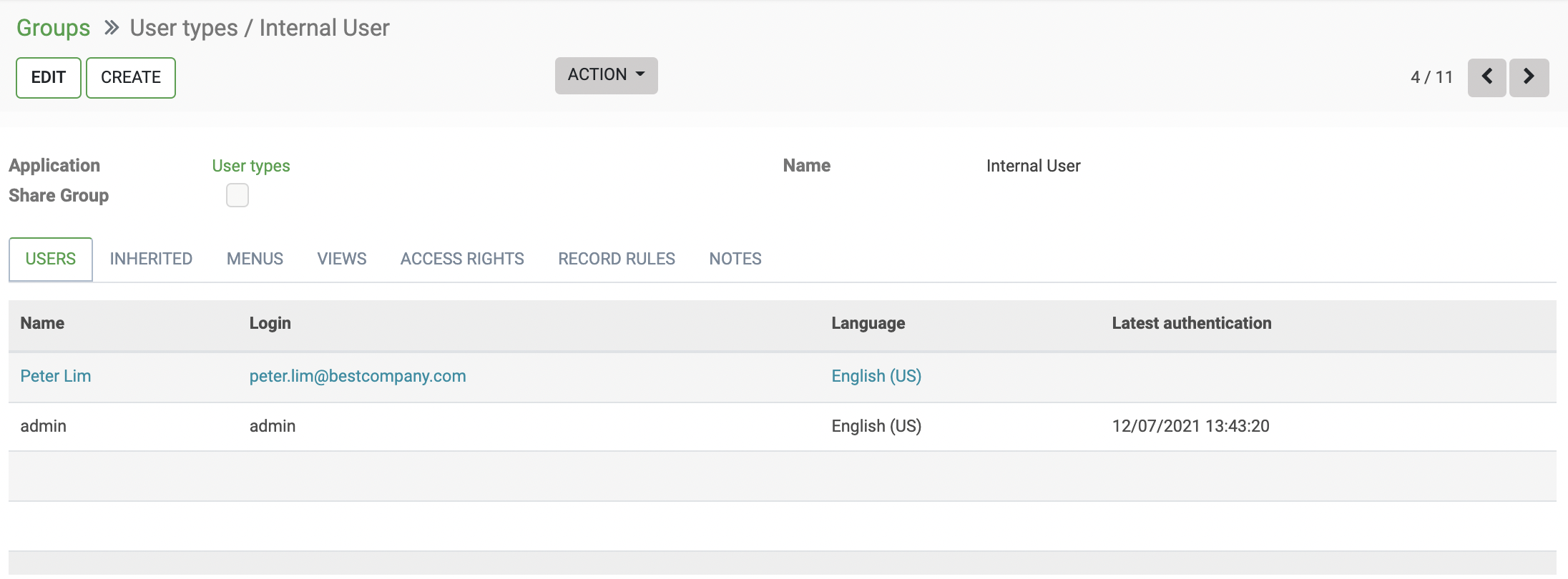
Inherited means that users added to this application group are automatically added to the following ones. In the example below, users who have access to the group Extra Right / Technical Features also have access to Internal User group
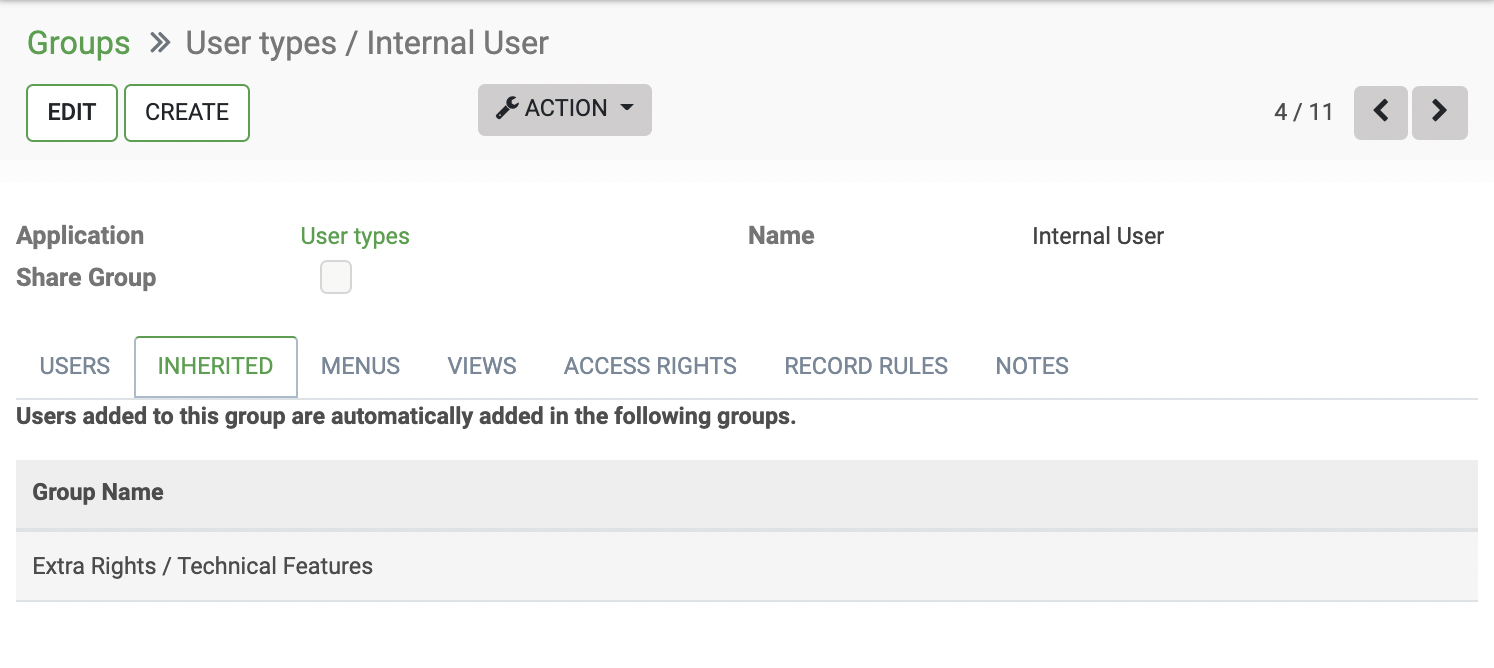
Important
Remember to always test the settings being changed in order to ensure that they are being applied to the needed and right users.
The Menus tab is where you define which menus (models) the user can have access to.
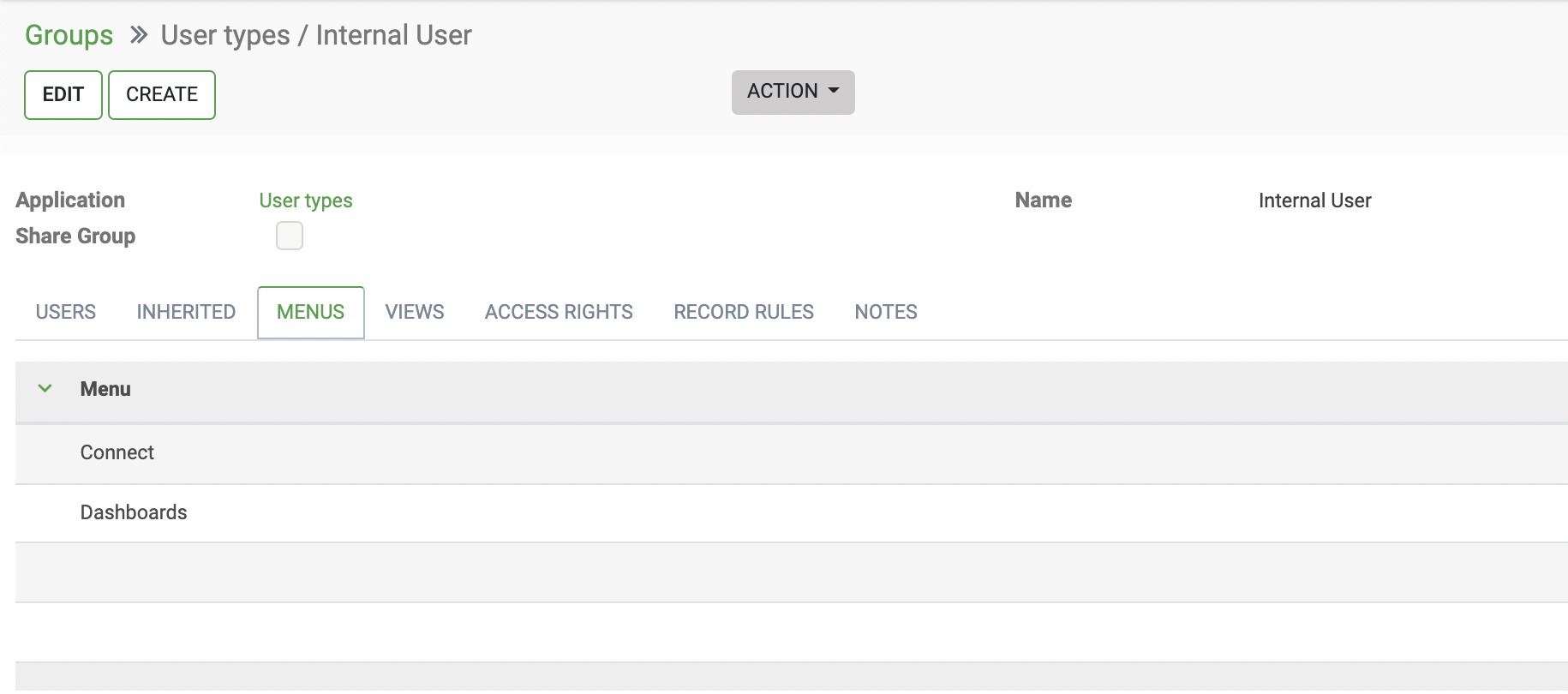
Access Rights rules are the first level of rights. The field is composed of the object name, which is the technical name given to a model. For each model, enable the following options as appropriate:
- Read: the values of that object can be only seen by the user.
- Write: the values of that object can be edited by the user.
- Create: values for that object can be created by the user.
- Delete: the values of that object can be deleted by the user.
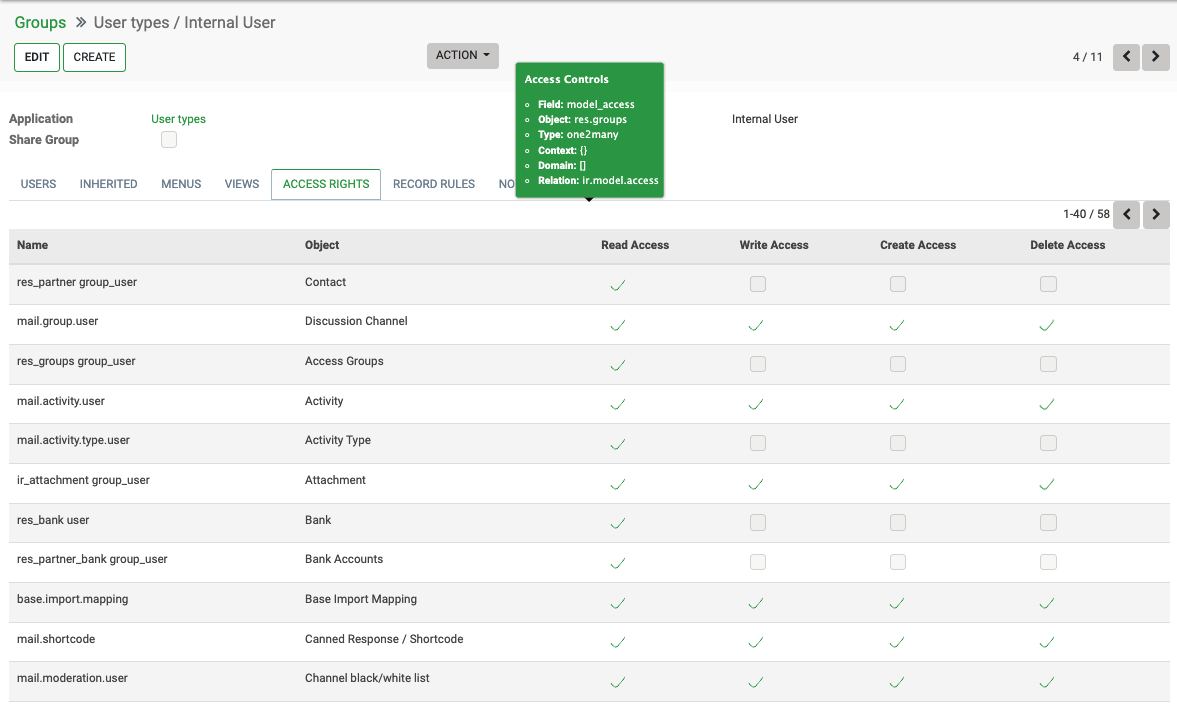
As a second layer of editing and visibility rules, Record Rules can be formed. They overwrite, or refine, the Access Rights.
A record rule is written using a Domain. Domains are conditions used to filter or searching data. Therefore, a domain expression is a list of conditions. For each rule, choose among the following options: Read, Write, Create and Delete values.
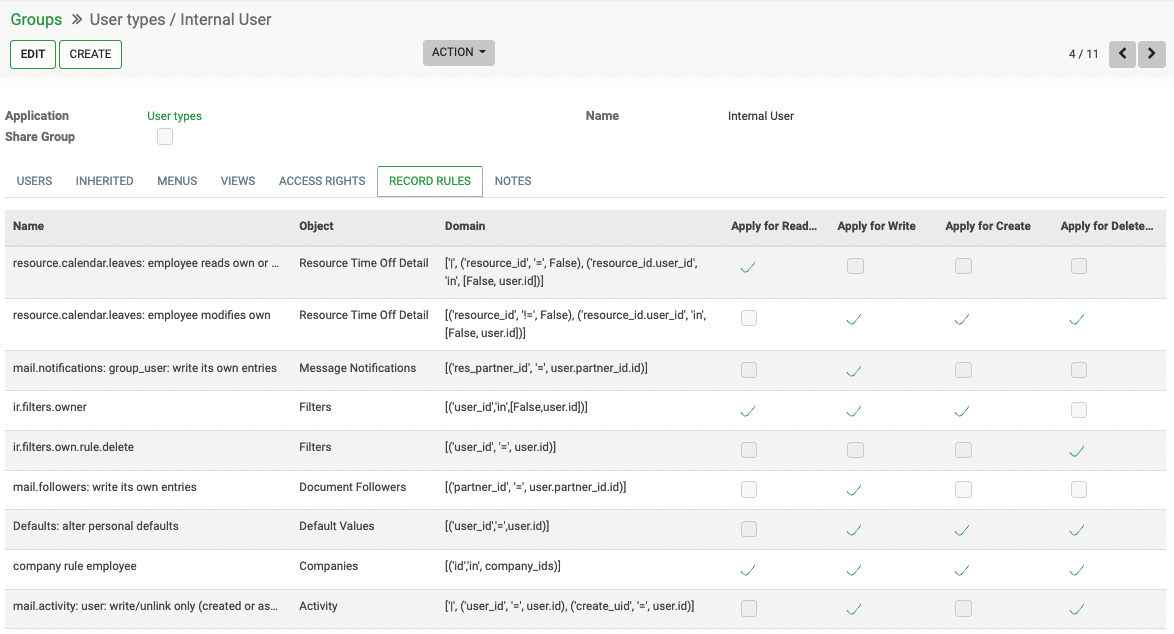
Important
Making changes in access rights can have a big impact on the database. For this reason, we recommend you to contact your PerfectWORK Consultants or our Support Team, unless you have knowledge about Domains in PerfectWORK.